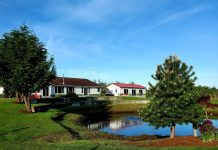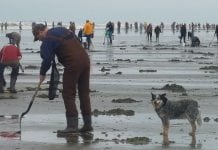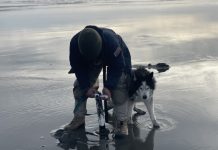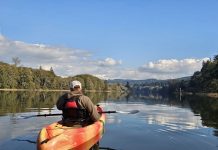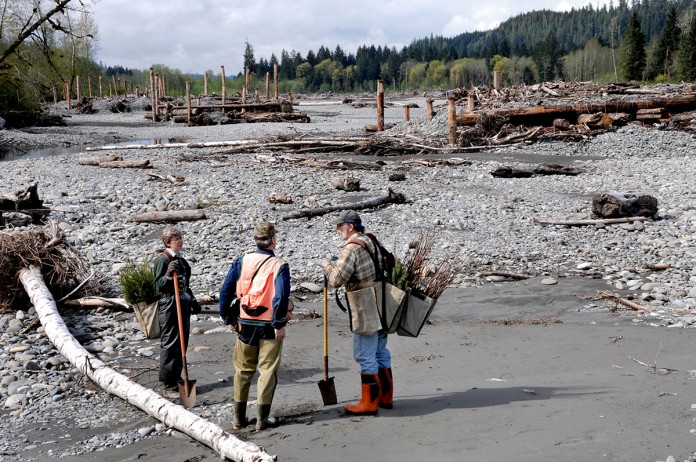Submitted by Quinault Indian Nation
 More than $11 million will be invested in environmental projects across Pacific Coast counties over the next two years with the adoption of a state capital budget signed into law by Governor Jay Inslee Tuesday. This specific funding will support the Washington Coastal Restoration Initiative (WCRI).
More than $11 million will be invested in environmental projects across Pacific Coast counties over the next two years with the adoption of a state capital budget signed into law by Governor Jay Inslee Tuesday. This specific funding will support the Washington Coastal Restoration Initiative (WCRI).
“We are thrilled about the passage of this budget,” said President Fawn Sharp of the Quinault Indian Nation. “This state funding will combine with federal and tribal funding and efforts to continue restoring the fish runs and fish habitat that mean so much to our people and to our entire region. This is what the Northwest culture and economy is all about,” she said.
“This combination of state, federal and tribal funding supports restoring the fish runs and fish habitat which mean so much to our people and to the entire region. The Blueback salmon, in particular, is the icon of not only a healthy environment, but of the continuation of our culture and our existence as a people. This funding brings hope that work will continue to restore this magnificent fish,” said Sharp.
The Capital Budget that passed includes $1.9 million for the Upper Quinault River, $64,000 for Moses Prairie and $343,000 for Quinault nearshore habitat restoration among funding for the other projects on the coast.
 “This funding will help benefit many people, both tribal citizens and non-tribal citizens. It means jobs, both now and in the future. It means an economic boost in an area that desperately needs it, and it supports the clean economy we truly want to have here,” said President Sharp.
“This funding will help benefit many people, both tribal citizens and non-tribal citizens. It means jobs, both now and in the future. It means an economic boost in an area that desperately needs it, and it supports the clean economy we truly want to have here,” said President Sharp.
“The Quinault people have a strong heritage. We have been here for thousands of years, and our past, present and future are totally connected with sustainable natural resources. We’d like to thank state legislators for recognizing the importance of strategically investing in projects that will buffer, improve and restore healthy habitats,” said Sharp. “These projects are an effective and efficient way to increase salmon populations, which support both Native and non-Native fishing, result in family wage jobs, and focus on areas with the least habitat degradation and the best chance for success,” she said Sharp.
Washington’s coastal communities continue to struggle with some of the highest unemployment rates in the state. A coalition of coastal partners, including the fishing industry, coastal tribes, watershed groups, the conservation community, local government, and state and federal agencies developed a prioritized package of projects that support critical restoration work and provide good-paying restoration and sustainable natural resource jobs.
 I’m pleased we were able to fund important projects that will make coastal habitat restoration a priority while also creating jobs,” said Senator Jim Hargrove (D-Hoquiam). “The whole region benefits from this investment.”
I’m pleased we were able to fund important projects that will make coastal habitat restoration a priority while also creating jobs,” said Senator Jim Hargrove (D-Hoquiam). “The whole region benefits from this investment.”
“We’re lucky to live in one of the most beautiful areas of the world, a place where recreational opportunities are endless. But we have to make sure we’re taking care of our local habitats, and the Coastal Restoration Initiative is a good plan to move us forward. I’m proud to have supported this measure and the jobs that it will create all along Washington’s coast,” said Rep. Kevin Van De Wege (D-Sequim)
“Clean water and healthy salmon populations are crucial for coastal economies,” said Steve Tharinger, State Representative (D-Sequim). “The Washington Coast Restoration Initiative is an important, community driven investment that will generate jobs and help to create a brighter future for the region.”
The Upper Quinault River project includes additional engineered logjams and forest restoration techniques to improve and restore in-stream salmon habitat. The Quinault nearshore habitat project will involve removal of derelict crab pots and fishing gear to increase safety for all boaters and enhance protection of the coastline; and the Moses Prairie project will entail a demonstration project of traditional management strategies for enhancing native plants and wildlife.
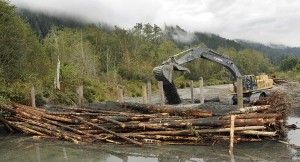 “Quinault Nation has been working to return ecological processes to Moses Prairie for years. The Prairie project will benefit salmon. But its most exciting aspect is the opportunity to practice traditional cultural landscape management with the use of fire, which hasn’t been practiced for more than a century. We particularly look forward to the return and management of plants traditionally used for medicinal and cultural purposes,” said Sharp.
“Quinault Nation has been working to return ecological processes to Moses Prairie for years. The Prairie project will benefit salmon. But its most exciting aspect is the opportunity to practice traditional cultural landscape management with the use of fire, which hasn’t been practiced for more than a century. We particularly look forward to the return and management of plants traditionally used for medicinal and cultural purposes,” said Sharp.
The $11.2 million funds 22 projects in counties throughout the coastal region, and creates nearly 250 permanent and seasonal jobs. State funding leverages an additional $6 million in existing federal, state and private dollars. Ninety cents of every dollar spent on restoration stays inside the state, and 80 cents of every dollar stays within the county where a project is located.














